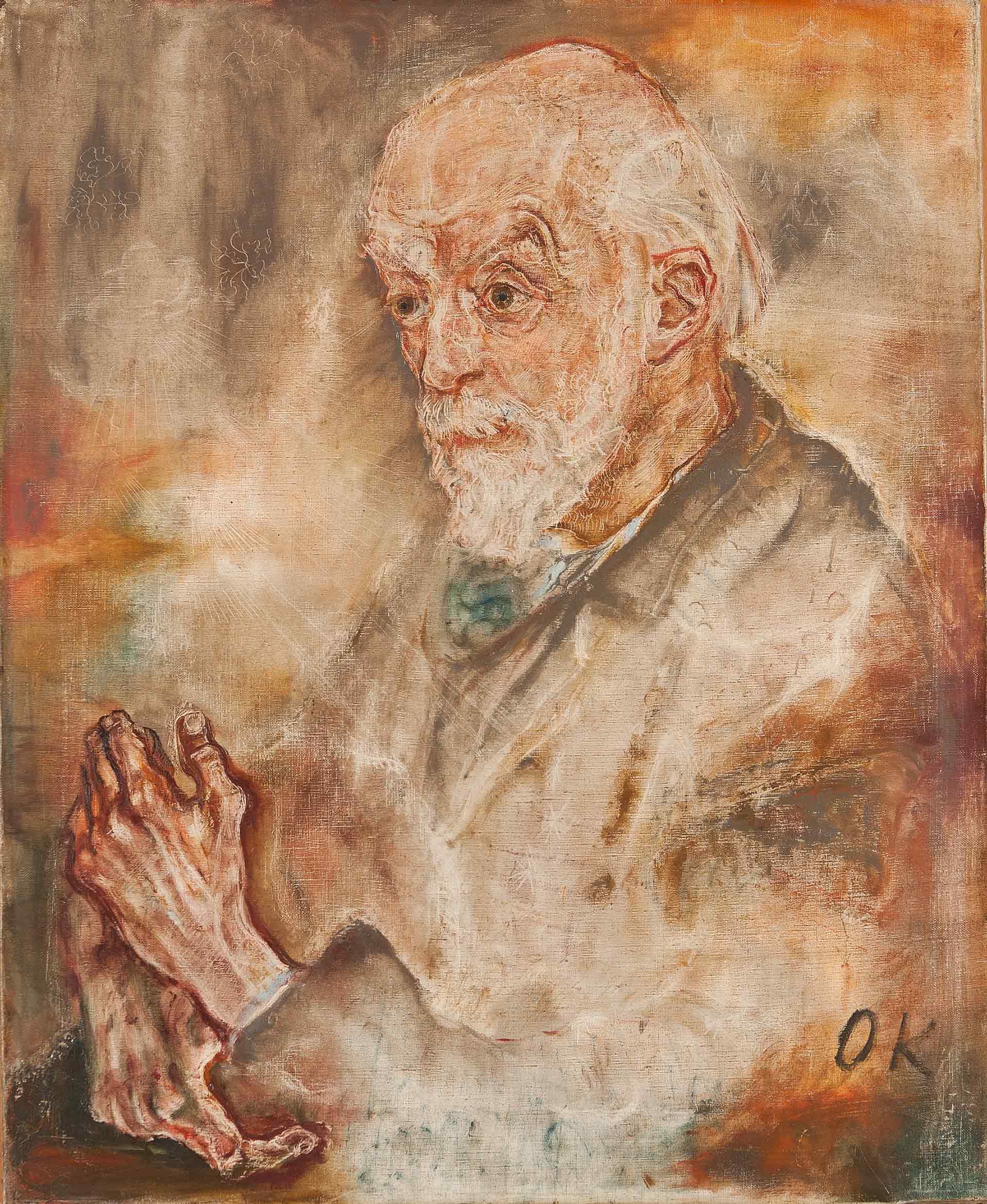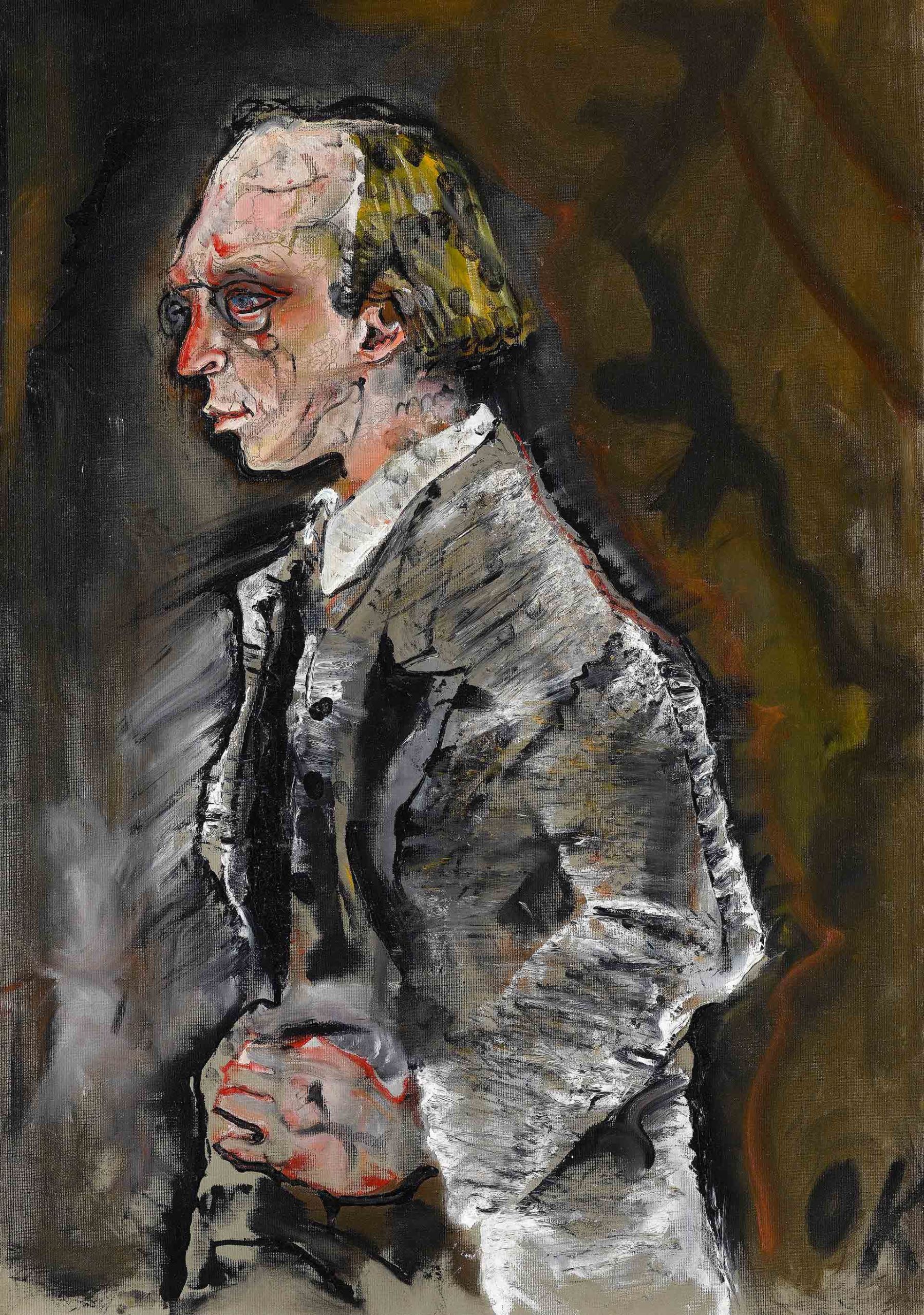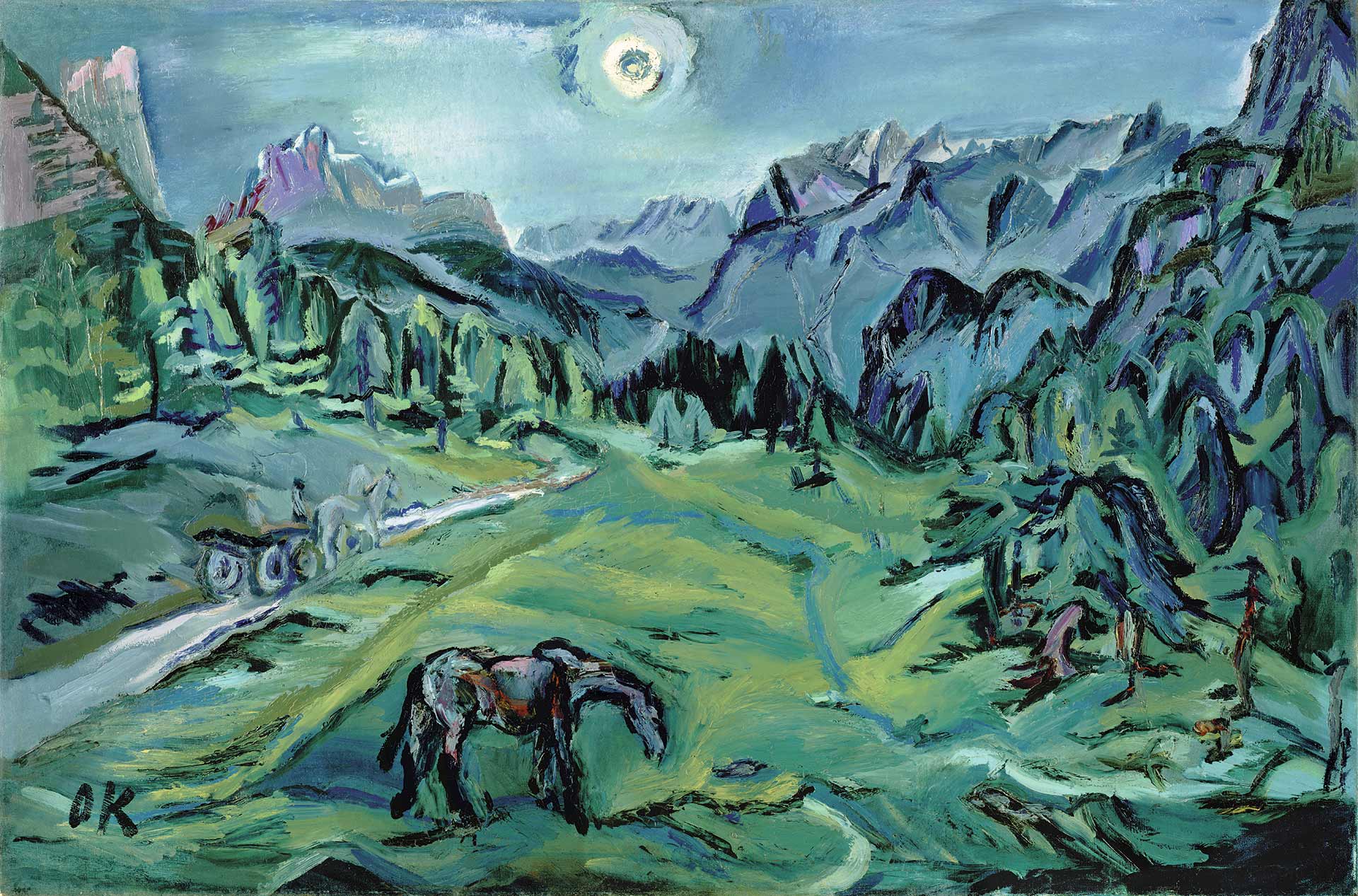Section I - An Enfant terrible in Vienna (1907–1916)
n the early years of the 20th century, members of the Vienna Secession and the Wiener Werkstätte (Vienna Workshops, 1903–32) advocated for the unity of the arts and invented soft, organic forms in art and architecture. Kokoschka, on the other hand, asserted himself with the crudeness of his drawings and texts, which foreshadowed the expressionist movement. In 1908, his first illustrated poem, The Dreaming Boys, dedicated to Gustav Klimt, caused a scandal when it was exhibited at the Vienna Kunstschau (Art Salon). The scandal was repeated a year later on the opening night of his play Murderer, Hope of Women.
Described as a savage by critics, Kokoschka shaved his head, which made him resemble a convict. But he also made allies, in particular the influential architect Adolf Loos (b. 1870; d. 1933). Thanks to his support, Kokoschka soon received many portrait commissions from members of Viennese society, who did not always easily accept the sharp way in which the artist portrayed them. By combining mannerist exaggeration and his own personal form of expressionism, Kokoschka managed to bring the inner states of his subjects to the surface.



